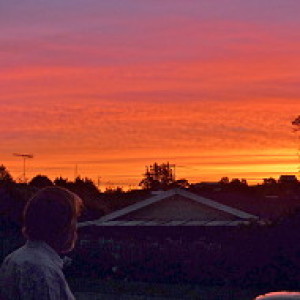Raupo Rap by Denis O'Connor, 2005
This morning I awoke to dense fog. From the deck we could barely see the houses nearby let alone right down into the valley. Given that today is Saturday, I chose to defer my run until the fog had gone and the sun was shining.
Late morning I headed down to the Viaduct Harbour with this sculpture in mind for my blip. It is part of the Viaduct Harbour sculpture trail, and takes the form of a giant hook elevated on pillars. It is constructed from red granite, white granite and stainless steel.
The hook is a symbol of work at the dockyards; this tool was traditionally used by waterside workers to load and unload ships. However, the artist created a work with multiple meanings.
The sweeping curve of the hook circles and enfolds in a gesture that suggests welcome and protection. The hook can also be interpreted as a fish hook. If the association with fishing is extended, the dockyard hook then becomes a fishing hook of men plying a trade to feed their families. Taking it further, "to be hooked" is to be captivated or trapped.
The red granite column represents the Rangitane, a passenger liner on the Southampton to Auckland route for over 30 years in the mid 20th century. Thousands of immigrants from Europe sailed to New Zealand on this ship. The artist's father arrived on the Rangitane in 1939. The white granite columns represent trading ships which sailed between New Zealand and the Cook Islands, Samoa and Fiji. Each of the four columns has the name of the ship it represents sandblasted into it.
The form of the raupo reed inset into the column references the fluting on a classical column and speaks of imported European culture. It also refers to the ecology of the region; the wetlands that once thrived in this area before being drained and reclaimed for trade, industry, housing and the nearby Victoria Park.
Denis O'Connor's father worked at the dockyards, and the family stayed in the near area, and the wharves were a central part of their lives. His father died at work, on Princes Wharf, not far from the site of this sculpture.
The sculptor has created a memorial to his father, to all the immigrants who came to New Zealand through this port, the workers on the wharves, the wetlands that were here originally, and the many people with a connection to this land.

Comments
Sign in or get an account to comment.


